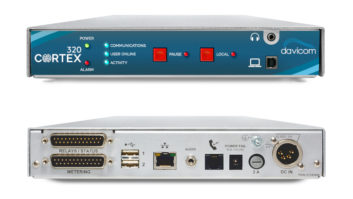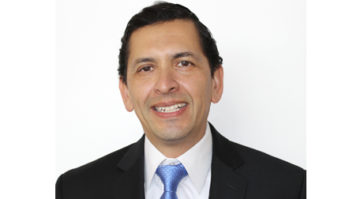SBE certification is the emblem of professionalism in broadcast engineering. To help you get in the certification exam frame of mind, Radio World Engineering Extra poses a typical question in each edition. Although similar in style and content to exam questions, these are not from past exams nor will they be on any future exams in this exact form.
CBRE Sample QuestionWhat is a dB? What is a Neper? For whom is the dB named?
a. A dimensioned, unitless ratio number; something like a dB but with a different log base; Snoopy’s sister.
b. A dimensionless, unitless ratio number; something like a dB but with a different log base; Alexander Graham Bell.
c. An audio level; the decade value of the dB; Alexander Graham Bell
d. A power ratio; the cube root of that power level; Alexander Graham Bell
e. Both an audio and a power level; a Greek god and patron to ancient engineers; mathematician Lawrence Titus Bell
The correct answer to the question in the box is B.
The dB, an abbreviation for decibel, is on its own a dimensionless, unitless ratio number named in honor of Alexander Graham Bell.
One of my most learned mentors advised me to think that life is linear but nature is logarithmic; and he is right. Most of the forces in physics exhibit logarithmic phenomena and sound is one of those. Bell recognized this in his work as a speech teacher and progenitor of telephone technology; it was the engineers of Bell Labs who named this logarithmic ratio after their founder.
These engineers wanted a comparative power valuator that would avoid having to deal with too large or too small numbers, and for calculations on slide rules one that would more easily yield workable values to three-place accuracy as well as other mathematical advantages.
The Bel is the common log base 10 of the ratio between any two similar power quantities. There are 10 decibels in a Bel and so the decibel can be stated as:
decibels = 10 (log10 x/y)
where this number will be negative for x/y values less then 1 (attenuation) and positive for values above 1 (gain). It turns out that for most people the smallest perceptible change in audio level corresponds to one decibel so this unit is most commonly used to describe audio levels.
SPECIAL CASES OF THE DECIBEL
Here’s why the first part of answers C, D and E are wrong.
When the decibel is used for comparison of a power level to some reference power level, a unit is added to the decibel. For example, if the ratio expresses a power increase more than 1 milliwatt, then the value is stated as dBm and we now have a unit-based decibel.
For instance, your STL has a power output of 10 watts (10,000 milliwatts). The power level referenced to 1 milliwatt (dBm) would be:
dBm = 10 (log10 (10,000/1))
dBm = 10 * 4
dBm = 40
A dB alone has no unit and hence cannot be automatically thought of as a power, voltage or current ratio.
The Neper is similar to the dB but uses the natural log (˜ 2.71828) and is interesting to us in this limited discussion, as this unit’s name is drawn from John Napier, the baron of Merchiston in Scotland.
The baron was the first to publish the mathematical concept of logarithms in 1614. Nepers are usually used to describe ratios of voltage and current, which are the components of power calculations.
The traditional patrons of engineers are St. Patrick and Lady Godiva. Don’t laugh, we need and will take all the help we can get.
Related trivia points to supercharge your next watercooler conversation:
The only telephone company actually started by Alexander Graham Bell was NYNEX (New York and New England Telephone), which is now a component of Verizon.
Elsewhere, noted technical historian Seth Shulman in his latest book “The Telephone Gambit” makes an interesting case that Bell stole the basic concept of the telephone from nearby, comtemporary experimenter Elisha Gray.
A CBRE question for next time: “An RF static drain coil is used where and for what purpose in your radio station?”












